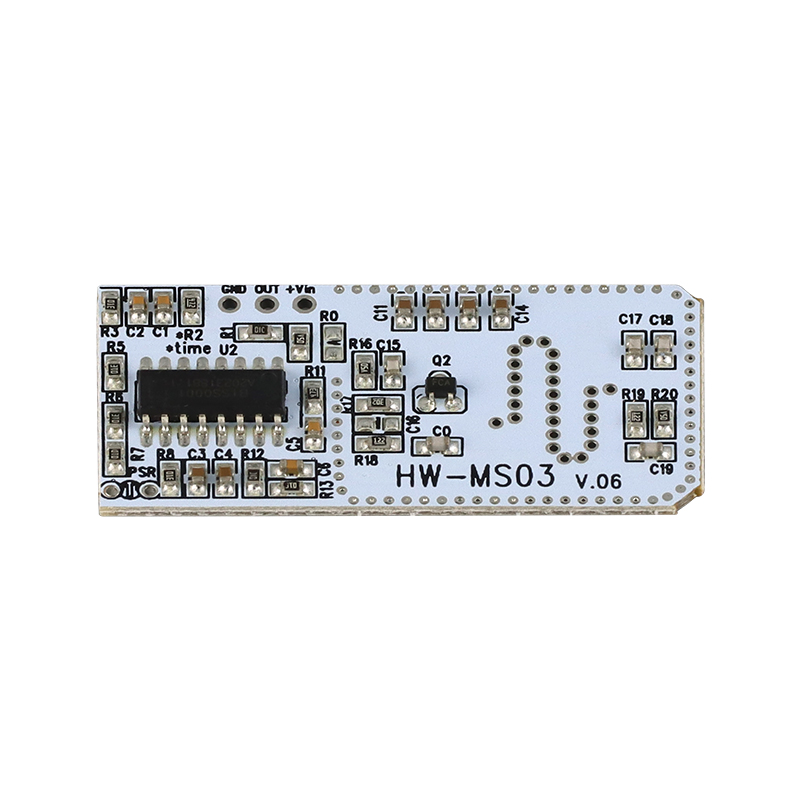 1004,West-CBD,No.139 Binhe Rd,Futian District,Shenzhen, China Post Code:518048
1004,West-CBD,No.139 Binhe Rd,Futian District,Shenzhen, China Post Code:518048
 +86-18682200597
+86-18682200597
 sales@szhaiwang.com
sales@szhaiwang.com
 1004,West-CBD,No.139 Binhe Rd,Futian District,Shenzhen, China Post Code:518048
1004,West-CBD,No.139 Binhe Rd,Futian District,Shenzhen, China Post Code:518048
 +86-18682200597
+86-18682200597
 sales@szhaiwang.com
sales@szhaiwang.com
source:Industry News release time:2022-04-15 Hits: Popular:Infrared sensing module

Thermistors are mainly composed of thermal probes, leads and shells. Thermistors are generally made of two-terminal devices, but there are also three-terminal or four-terminal ones. Two-terminal and three-terminal devices are direct thermal, that is, power is obtained directly from the circuit. Four-terminal devices are bypass-heated. According to different requirements, the thermal resistance can be made into different shapes and structures.
The positive temperature coefficient thermistor is made of barium titanate (BATIO3), strontium (Sr), zirconium (Zr) and other materials, and is a direct thermal thermistor. The resistance value is proportional to the temperature change, that is, the resistance value increases when the temperature increases. At room temperature, its resistance value is small, only a few ohms to tens of ohms; when the current flowing through it exceeds the rated value, its resistance value can rapidly increase to hundreds of ohms to several thousand ohms in a few seconds The above are widely used in color TV degaussing circuits, refrigerator compressor startup circuits and overheating or overcurrent protection circuits, and can also be used in electric mosquito repellents and hair curlers, electric heating pads, heaters and other small appliances.
Negative temperature coefficient thermistors are made of manganese (Mn), cobalt (Co), nickel (N), copper (Cu), aluminum (Al) and other metal oxides (with semiconductor properties) or silicon carbide (SiC) and other materials. Made of ceramic technology. Its resistance value is inversely proportional to the temperature change, that is, when the temperature rises, the resistance value decreases accordingly. It is widely used in refrigerators, air conditioners, microwave ovens, electric ovens, copiers, printers and other home appliances and office products for temperature detection. , temperature compensation, temperature control, microwave power measurement and voltage regulator control.
Classification of thermistors
According to the structure and shape, it is divided into a variety of thermistors such as disc-shaped (sheet-shaped), cylindrical (column-shaped), circle-shaped (washer-shaped) and so on.
According to the sensitivity of temperature change, it is divided into high-sensitivity (mutant) and low-sensitivity (slowly) thermistors.
According to the heating method, it is divided into direct heating thermistor and side heating thermistor.
According to the characteristics of temperature change (temperature change), it is divided into positive temperature coefficient (PTC) and negative positive temperature coefficient (NTC) thermistors.
Read recommendations:
The application of NTC thermistor in automation equipment.Automatic machine mirror
Popular Recommended Products
PIR Lens 2814
2021-12-09HW-M09-2 microwave sensor module
2021-12-07HW-F1000-1 Fresnel Solar Lens
2021-11-27HW-11801630 Imaging Fresnel lens
2024-04-11PIR Lens 8308-5
2021-12-09PIR Lens RX-23
2021-12-09PIR200B Analog sensor
2021-12-09PIR Lens 8005-1
2021-12-09PIR Lens 8603-5
2021-12-09HW-MD6 microwave sensor module
2021-12-07Z001
2021-11-27What terminology do we use to describe FIR filters?
2022-10-27What is an NTC temperature sensor?Body Temperature Sensor
2023-09-08What are the advantages of radio frequency sensors
2022-07-20NTC temperature sensor and its resistance range for air fryer
2022-07-27The industry's smallest medical grade FIR sensor
2022-10-25Application of Fresnel Lens in Passive Infrared Detection
2022-11-0910kntc thermal resistance!Human Body Infrared Temperature Sensor
2023-02-18NTC chip (can replace Japanese NTC chips).SMD PIR IC
2023-07-12Application of NTC thermistor in charging circuit.Human Body Temperature Monitoring Sensor
2022-06-07The application of NTC thermist chips in copper and silver keys
2023-02-08
szhaiwang4@hotmail.com
+86-18682200597
sales@szhaiwang.com